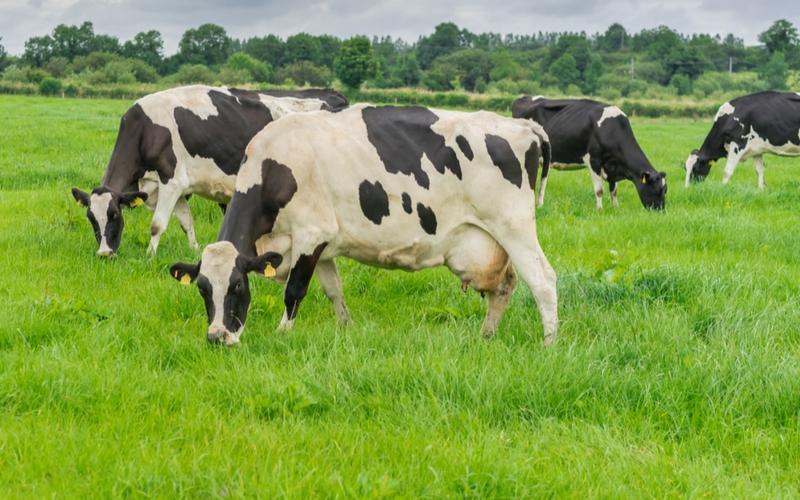The corn conundrum
My grandfather used to talk to me about the “spring flush” and the “fall slump.” To me, these words were as synonymous with the changing seasons as “spring ahead” and “fall back.”
Advancements in management, tillage practices and nutrition have reduced the differences in production that some of our pasturing neighbors might experience with the “spring flush.” However, I still see farms of all shapes, sizes and styles face the dreaded “fall slump” on an annual basis with new crop corn silage. Production losses of 2–8 pounds of milk can be common, coupled with surges in fat and protein and increased instances of hindgut fermentation. Let’s take a closer look at some of the causes and potential solutions to this corn conundrum.
What’s behind the annual “fall slump” with new crop corn silage?
Corn silage can be the most energy-dense forage that we feed. Comparatively, it also has the highest yield potential and is, arguably, the most consistent forage that we harvest. Despite these benefits, there can be some drawbacks, including variability in quality related to changes affecting starch and fiber.
Of all these challenges, there is one in particular that reigns supreme over the king of forages. It is, of course, our friend and nemesis, Mother Nature, which can give us bumper crops or colossal failures. Success often hinges on the weather at the time of planting, silking and harvesting. Temperature and rainfall amounts can swing the pendulum, causing corn silage yield to range from 10 tons to the acre to 30 tons to the acre.
Fiber
There is significant research on fiber digestibility in corn silage. Much of that information shows that neutral detergent fiber (NDF) digestibility does not really increase over time, post-harvest. It seems that, in most cases, we have what we have.
The greatest influences on NDF digestion are based on genetics, varietal differences and, most importantly, the weather. Years ago, certain cuttings and certain crops just fed well, but we were not sure why because the traditional fiber measurement methods of lignin, acid detergent fiber and NDF did not clearly distinguish performance. New testing methods and research can now demonstrate that the once-leaned-on lignin numbers were good on legumes but wildly variable on grasses, small grains and corn silage. With all the recent research on both 30-hour NDF digestibility and undigested NDF (uNDF240), we know so much more about the fast and slow pools of forage digestion.
A major nemesis to digestibility in our forage crop is the plant itself. We are beginning to understand the effects of cross-linking, the plant’s defense against stress, on our corn silage as well as other forages. Cross-linking in the fiber portion of the plant will lock up digestibility as a defense mechanism. Because of the unknowns that come with Mother Nature, we can do everything just right and still have a silage crop that feeds below average.
There are three solid fiber-specific strategies for coping with the loss in production in the fall:
1. Feeding digestible corn silage varieties like brown mid-rib can reduce the lag time that it takes for the starch portion of the forage to catch up. Of course, selecting the correct relative maturity for the climate, elevation and soil type will make optimal harvesting much easier to achieve.
2. Tweak the digestible fiber that is delivered to the cow. In the past, wise nutritionists would outsmart the silage slump with a combination of increased starch levels and forage fiber sources like soy hulls, citrus pulp and wet brewers grain. The addition of these fiber byproducts can reduce the percentage of the indigestible forage.
3. Utilization of fiber-digesting enzymes like Fibrozyme® can help unlock some of the forage potential.
Starch
The real wild card is the starch portion of the corn silage plant. Research on monitoring the seven-hour starch digestibility levels yields some telling information over time. Starch digestion starts off at a crawl and ends up in a sprint. Many trials show that the starch portion is still increasing digestibility at close to 300 days after harvest. Our milk fat test surely knows the feeding difference between new crop corn silage and feeding out 9-month-old corn silage.
Why does this happen? Kernel type is a vital piece of the puzzle. There’s been a lot of talk of flinty versus floury kernels, and there’s been quite a bit of recent trial work on floury kernel types.
The protein-starch matrix is crucial to how the corn will digest. The more vitreous the kernel type, the longer it will take to achieve maximum digestibility. Corn breeders are researching varieties and kernel types that will feed out faster than they have in the past. Recent research suggests that lower test weight varieties will feed out quicker than higher test weight varieties.
We can tweak the starch digestion somewhat with management during harvest and some management of the cow. Adequate processing of the kernels at harvest will help to break down the particle size, which will aid in starch digestion. Additionally, starch-digesting enzymes, like Amaize®, have been shown to assist in breaking down some of the starch so that the rumen can utilize it more efficiently. Consult with your seed representative, agronomist and nutritionist to see what the best option is for your soil type, ration and day length.
I want to learn more about improving nutrition on my dairy.
- Read more about The corn conundrum
- Log in to post comments

<script charset="utf-8" type="text/javascript" src="//js.hsforms.net/forms/v2-legacy.js"></script>
<![endif]--><script charset="utf-8" type="text/javascript" src="//js.hsforms.net/forms/v2.js"></script><script>
hbspt.forms.create({
portalId: "745395",
formId: "2c5ba201-30c0-4669-9dc4-c9711ca1b006"
});
</script>
Corn silage can be the most energy-dense forage that we feed.


























